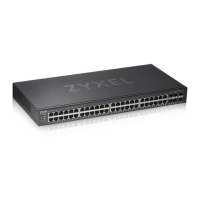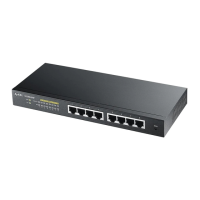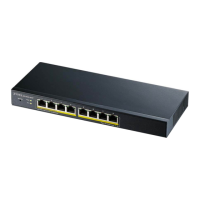Chapter 31 Link Layer Discovery Protocol (LLDP)
GS1920v2 Series User’s Guide
180
MAC PHY
Configuration &
Status TLV
The MAC/PHY Configuration/Status TLV advertises the bit-rate and duplex capability of the
sending 802.3 node. It also advertises the current duplex and bit-rating of the sending node.
Lastly, it advertises whether these setting were the result of auto-negotiation during link
initiation or manual override.
• AN Supported – Displays if the port supports or does not support auto-negotiation.
• AN Enabled – The current auto-negotiation status of the port.
• AN Advertised Capability – The auto-negotiation capabilities of the port.
• Oper MAU Type – The current Medium Attachment Unit (MAU) type of the port.
Max Frame Size
TLV
Max Frame Size – This displays the maximum supported frame size in octets.
Link
Aggregation
TLV
The Link Aggregation TLV indicates whether the link is capable of being aggregated,
whether the link is currently in an aggregation, and if in an aggregation, the port
identification of the aggregation.
• Aggregation Capability – The current aggregation capability of the port.
• Aggregation Status – The current aggregation status of the port.
• Aggregated Port ID – The aggregation ID of the current port.
Power Via MDI
TLV
The Power Via MDI TLV allows network management to advertise and discover the MDI
power support capabilities of the sending port on the remote device.
•Port Class
• MDI Supported
• MDI Enabled
• Pair Controllable
• PSE Power Pairs
•Power Class
Table 81 PORT > LLDP > LLDP > LLDP Remote Status > LLDP Remote Port Status Detail (Dot1 and Dot3
TLV) (continued)
LABEL DESCRIPTION

